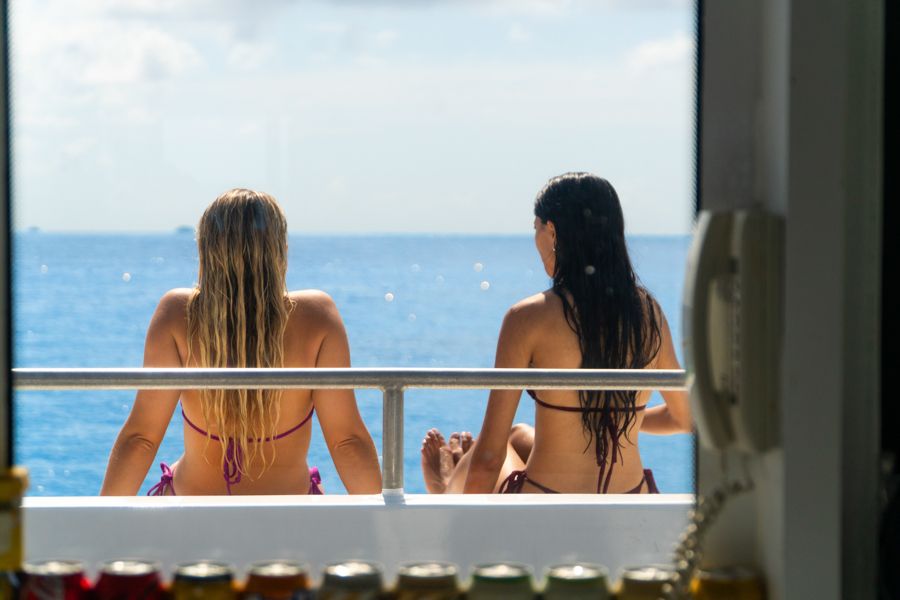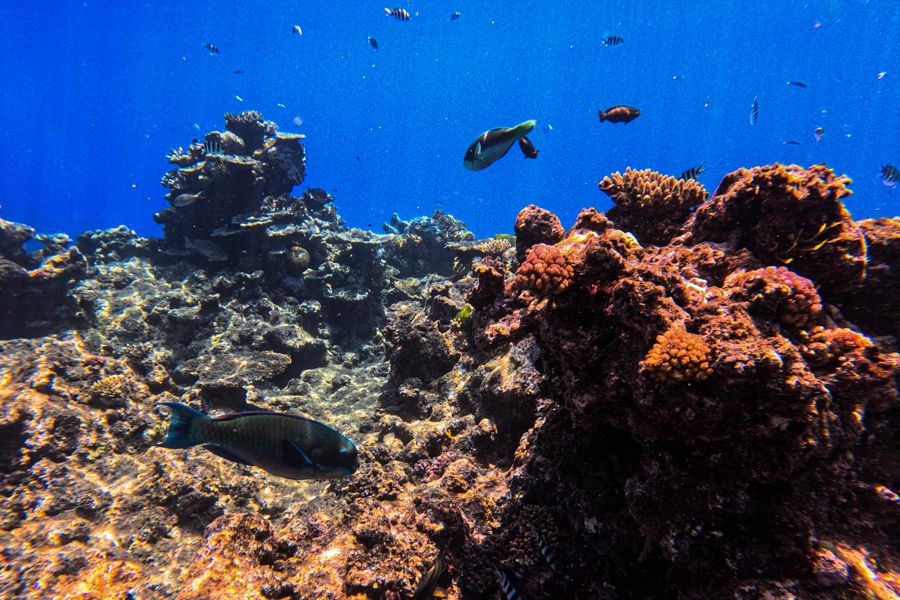What Is The Best Time Of Year To Dive In Cairns?

Believe it or not, the best time of year to scuba dive in Cairns is during the winter and into mid-spring, from May to October. This is because the drop in temperature coincides with a significantly decreased presence of deadly jellyfish and stingrays, lessening potential danger in the water as well as the need to don the daggy stinger suit! FYI, stinger season runs from November to May.

The Best Time To Visit the Cairns Great Barrier Reef
May to October is the best time to visit the Great Barrier Reef in Cairns! Don’t let the notion of going on a tropical holiday in the middle of winter scare you. Far North Queensland is blessed with an eternal summer, and even in the winter months, the average low is only 18°C with glorious tops of 27°C, and an average water temp of around 23.5°C.
Whilst summer may seem like the logical time to visit, the sub-tropics are notorious for their intense highs and humidity around this time of year. And I’m not sure if you've heard, but Queensland can cop a fair beating from cyclones, torrential rains and flash flooding during the summer months.

What is the best month to visit the Great Barrier Reef?
The best months for the Great Barrier Reef are between May and October. Not only, as mentioned earlier, do some of the gnarlier Great Barrier Reef residents disappear around this time of year, but a variety of popular yearly vacationers return for migration. Expect to catch sight of dwarf minke whales and humpback whales from June to August as they make their way up north to get their rocks off and raise some babies.
The best place to swim alongside dwarf minkes and their calves is around the Ribbon Reefs, just off the coast of Lizard Island and Port Douglas. One of your best bets to cash in on a whale of time during migration season is with Oceanquest or Spirit of Freedom. Dive deep into underwater worlds covered in floral corals of colours that will blow your mind, and glide through minke paradise, getting so close that you can even count the barnacles on their backs!

The best way to see the Great Barrier Reef
The best way to experience the Great Barrier Reef is on a three-day liveaboard. Three days gives newcomers to the diving game ample time to find their flippers in the water and learn their way around an oxygen tank, whilst at the same time, providing ample time for diving pros to show off their skills and take inventory of the myriad of tropical fish playing in the coral.
Explore the Great Barrier Reef near Cairns!
More about Great Barrier Reef Liveaboards
A liveaboard is also more likely to venture out to the Outer Reef, where the reefs are a little less visited and a whole lot busier in the way of marine traffic. You're more likely to encounter exciting underwater terrains like drop offs, caves, swim-throughs and a variety of coral formations, including vertical coral gardens and bommies.
Agincourt, neighbour to the Ribbon Reefs on the Outer Reef, is made up of 19 individual reefs in total! Meaning that even if your liveaboard were to stick to these waters for the whole three days, you still wouldn't have had a chance to explore every inch of Agincourt's garden reefs, shipwrecks, clefts and caves!















